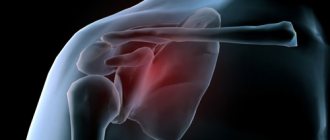Muscles are organs of the human body that are made up of muscle tissue. They allow a person to perform body movements and contract under the influence of nerve impulses. The term "myalgia" is used to describe a symptom that is expressed by muscle pain. It can be triggered by a variety of factors, which will be discussed in this article.
Myalgia occurs when moving or pressing on muscles. It can affect one or several muscles at once. Painful sensations may affect ligaments and tendons located nearby. If you want to know why the muscles in your body hurt and how to relieve muscle pain, contact the CELT Pain Clinic. Our doctors will conduct a diagnosis and find out the reason why you are experiencing discomfort. In accordance with it, treatment will be prescribed, which will definitely be effective.
At CELT you can get advice from a specialist algologist.
Make an appointment
Muscle fatigue
In our technological age, many people are gradually forming a new “bad habit”. Spending most of the day in front of a computer screen or holding mobile gadgets in our hands, we may not even notice that we are sitting in a completely uncomfortable and unnatural position. It especially affects the muscles of the shoulder girdle, neck, back and right arm, which is constantly on the computer mouse of office workers1. Staying in one position for a long time or using stereotyped movements can lead to overstrain of the muscles involved, which we feel as soreness1.
Rehabilitation and lifestyle restoration
Patients suffering from muscle pain undergo diagnosis, treatment and restoration of the body without leaving the clinic. The Kuntsevo Medical Center has its own rehabilitation department. The success of its work is based on the availability of modern highly efficient equipment, a staff of experienced specialists, and the application of the principle of an individual approach.
The technical equipment of the clinic meets modern world standards. To restore the body after an illness, manual therapy sessions are often prescribed. Its peculiarity is its effect on tissues to ensure the normal functioning of the systems of the human body. During the procedures, restriction of joint mobility is eliminated, muscles are relaxed, and minor tissue compactions are removed. Properly performed manual therapy is gentle and completely painless.
Exercise stress
“Body aches” after physical activity can occur both in untrained people and in professional athletes8. And the cause of discomfort is the accumulation of under-oxidized metabolic products in muscle cells; in particular, painful sensations are caused by an excessive amount of lactic acid (lactate)2. Less commonly, the cause is microtrauma, but this can only occur if the training rules are violated8.
Muscle soreness due to overwork does not occur immediately, but after a few hours or within 1-2 days after training or unusual physical activity and disappears within a week8.
Pathologies
Pathological pain in the muscles, requiring a mandatory visit to a specialist, is expressed in the following:
- constant or chronic pain;
- twitching nature of the disease;
- pain appeared after training, but does not go away after rest;
- redness of soft tissues or swelling is observed;
- accompanying symptoms are observed in the form of fever, shortness of breath, rash, and urinary retention.
Important! If at least one of the above conditions occurs, it is recommended to contact a specialist.
Injuries
Severe pain can occur when muscle fibers and tendons are torn. This usually happens if the load is excessive and the muscles are not prepared for it1. But they can also be damaged by sudden movements3. Unlike “ache” due to muscle overwork, pain due to injury occurs immediately, at the peak of the load3.
It should be remembered that even a small, but untreated injury can cause an even more severe sprain3. Therefore, if you experience pain during physical activity, be sure to consult a doctor to rule out a serious injury.
to come back to the beginning
Lifestyle recommendations
As preventative measures for myalgia of various origins, it is important to avoid heavy physical activity and stress, not to get too cold, to fully treat infectious diseases and to lead a healthy lifestyle.
Aching muscle pain is a fairly common occurrence; sometimes it is harmless and goes away soon, but sometimes it is a consequence of serious diseases that require monitoring and treatment. Highly qualified specialists of the Kuntsevo Medical and Rehabilitation Center are ready to provide timely and high-quality assistance in resolving this issue.
Diseases of the spine and joints
Muscles react to disruption of the joints4 and vertebrae5 associated with them. Therefore, myalgia is one of the symptoms of diseases of the spine5,11 and joints of the limbs4. For example, with osteochondrosis or scoliosis (curvature of the spine), pain in the neck, chest or lower back is associated with overstrain of the paravertebral muscles5,11. And in advanced cases, when the vertebra compresses the nerve root emerging from the spinal cord, the pain can “radiate” to the arm or leg11.
Often myalgia with osteochondrosis is combined with a feeling of numbness or “crawling goosebumps”. At the moment of acute pain, a person freezes, taking a forced position11.
Treatment results
Treatment of muscle pain is carried out in various ways. Patients are prescribed:
- acupuncture and acupressure treatments;
- electro- and physiotherapy;
- exercise therapy;
- manual manipulations.
Special exercises are especially relevant for chronic pain that is a consequence of spinal pathologies, for example, osteochondrosis, disc herniation or spondylosis. For severe muscle tissue injuries, surgical treatment methods are used.
Other reasons
Almost any disease of the internal organs can lead to myalgia11. When an organ is affected, it creates pain impulses that are partially transmitted to the muscles located nearby11.
Myalgia can also be caused by:
- endocrine diseases, such as thyroid hormone deficiency16,7;
- vascular pathologies that disrupt the nutrition of the muscles of the limbs15,16;
- chronic fatigue syndrome7;
- imbalance of microelements in the body16;
- taking medications that lower blood cholesterol levels12.
to come back to the beginning
Features of myalgia
Pain emanating from the muscles is usually deep6. Acute myalgia is protective in nature because it causes reactions aimed at eliminating the damaging factor11. Such reactions include, for example, muscle spasms4. But despite its protective nature, there is almost always a risk that the pain will become chronic11. There are 2 main causes of chronicity:
- Increased sensitivity. In response to irritation, the muscle releases substances that support inflammation. They further irritate pain receptors in the muscles. In response to frequent signals, the central nervous system lowers the pain threshold, so we can feel soreness in the muscle even when it is not strongly irritated11.
- Spasm. If pain and spasm persist, a “vicious circle” is formed: pain causes spasm, and spasm maintains pain1,5, 11.
Muscle pain
For most people, muscle pain is characterized by unpleasant sensations that can be constant, nagging, or manifest as sharp spasms. Its appearance is possible both in a specific, localized place and throughout the body as a whole. Pain can flow from one area to another, so a person cannot even clearly identify the place where the source of discomfort is located. In total, there are about 600 muscles in the human body that can lead to pain.
The most common areas where pain occurs include the muscles of the back, neck and shoulder areas. In general, all muscles can be divided into two groups. The first includes skeletal, the second - smooth. The main task of skeletal muscles is the connecting role between the individual elements of the human bone skeleton. In them, pain occurs quite rarely. Most often it can be found in smooth muscles, which are located on the walls of various organs. An example is the heart muscle, whose main task is to pump blood to the heart. The pain in it causes discomfort in the heart.
The muscle response is determined by signals that come from the brain through the nervous system. Reflex movement is also possible. The most striking example of the manifestation of a reflex is an examination with a special hammer in a doctor’s office. The main actions that muscles perform are relaxation and contraction as a result of external influence. After various injuries, infectious diseases, neurological and muscular diseases, pain may occur. It is also possible that pain may occur and in cases where various medications were taken, there were malignant tumors. Pain can involve not only muscle tissue, but also tendons and ligaments, which perform a connecting function between the muscles, bone skeleton and internal organs of a person.
Depending on the problem, different types of pain can be distinguished. For example, during a cold and flu, a person feels pain in the muscles throughout the body; if we talk about menstrual pain, they are associated with the smooth muscles of the uterus and are cramping in nature. They can also appear due to high loads. In this case, the pain will be sharp, severe and intermittent. In cases where the pain is prolonged and increases in intensity, you should consult a doctor. This is due to the fact that pain can be a sign of a serious illness, ranging from infection to ligament rupture.
Any painful sensation means something is going wrong in the body. It manifests itself by transmitting a signal from pain receptors to the nervous system, to the brain, where analysis occurs. Any mechanical impact - impact, cooling, heating - can be an impetus for this signal. The body’s response is to protect itself, to exclude the possibility of a repetition of this situation, so that the body does not suffer even greater harm.
Main symptoms of muscle pain
Depending on the cause, muscle pain may be accompanied by a number of other symptoms. In cases where there was damage due to an impact, there may be a bruise, abrasion, or swelling in the place where the pain is concentrated. In addition, muscle pain can be characterized by a variety of symptoms, such as depression, upset stomach, fever, chills and headache, sore eyes and poor concentration. It is also possible to experience seizures and loss of appetite, vomiting, weight loss, problems walking and others.
Among all the symptoms, there are a number that require special attention, since their appearance indicates life-threatening diseases. If they appear, you should immediately contact a specialist, as this could be a heart attack or the development of meningitis:
- The occurrence of memory disturbances, loss of consciousness and orientation;
- Change in perception of the environment;
- Chest pain that radiates to the arm, shoulder, or jaw;
- The appearance of shortness of breath and difficulty breathing;
- Impaired motor function of body parts;
- Urinary problems;
- Numbness that gradually gets worse;
- Convulsions and high fever.
All of the above symptoms require immediate examination and professional intervention.
Cause of muscle pain
In cases where the pain originates in the skeletal muscle, it is worth looking for injury as the cause. It can be not only direct, but also indirect, when muscle fibers or tendons are torn as a result of severe tension or overextension. Depending on the degree of rupture, muscles can quickly recover, as they have a regenerative function. In cases of severe damage, surgery may be required.
In some situations, muscle pain is accompanied by cramps. This occurs due to a sharp contraction of muscles. She can also talk about a serious illness, such as meningitis, heart attack, cancer.
In general, several groups can be distinguished into which all types of muscle pain are divided.
Traumatic pain. They occur as a result of trauma. These include a blow that was caused by a blunt object. Stretching of muscles and ligaments followed by rupture. Repetitive movements that lead to muscle overload. Pinching that can occur as a result of a hernia.
Neuromuscular diseases. In this case, muscle pain is caused by diseases of the nervous system and the condition of the body as a whole. Common causes include brain and spinal cord injuries, Lyme disease, amyotrophic lateral sclerosis, dermatomyositis, muscle breakdown, stroke, various muscle infections and other types of diseases.
Other reasons. These include the occurrence of pain as a result of taking medications, cancer, depression, myocardial infarction, lupus erythematosus, lack of vitamins B12 and D, and pregnancy.
It is quite difficult to list all the causes of pain. In order to determine the source, there are a number of special questions. Their main task is aimed at identifying the main symptoms accompanying pain and the location of pain. First of all, the specialist needs to determine whether there is a fever, sore throat and other signs of a cold. Where pain attacks are felt most strongly. How long do they last? Does the intensity of the pain change, whether medications were taken and which ones.
All this will allow the doctor to quickly identify the source and causes of its occurrence. The necessary treatment will also be prescribed. If it is not started in a timely manner, complications may occur.
In general, most conditions that are associated with muscle pain are treatable. But if they have been neglected, consequences such as decreased motor activity, immobility, chronic pain, severe damage and muscle atrophy may appear. In order for treatment to be prescribed on time and correctly, it is necessary to make high-quality diagnostics.
Diagnosis of diseases characterized by muscle pain
In order to correctly diagnose myalgia, it is necessary to study the patient's medical history. The most common cause of pain is tension, which can be caused by incorrect posture or lack of physical activity. There may also be fresh or old injuries. Ultrasound, X-ray, CT, and MRI can be used as the main methods to determine the cause of pain. Diagnostic methods can be divided into two stages: studying the medical history and laboratory tests.
Initially, the doctor will study the medical history and ask all the necessary questions that will be aimed at clarifying the symptoms that characterize the pain. Recognizes the place and conditions in which it occurs. At this stage, it is important to find out whether there have been injuries, perhaps in the past, what nature of the pain is, whether it is periodic or is of a constant, intensifying nature.
This information is often key in determining diseases such as intervertebral hernia. During the examination, the doctor checks the integrity of the skin. Of particular importance are areas where bruises, bruises, and swelling are found. It is also necessary to check muscle activity and reflexes, sensitivity. The patient undergoes a series of neurological tests.
In addition, the doctor must be given complete information about the time of onset of pain, since this is significant for certain diseases. It is necessary to warn about lifestyle - alcohol abuse, drugs that were taken in the near future.
After the initial examination has been carried out, the basic reflexes have been checked and a preliminary conclusion has been made, it is necessary to conduct laboratory tests. They will be sent to confirm the primary diagnosis.
If muscle pain occurs, a laboratory blood test must be done. A complete biochemical analysis will show whether there are inflammatory processes and disturbances in the functioning of internal organs.
Then an ultrasound examination is performed in areas where pain is most localized. It helps identify inflammation in the muscles and the presence of tears.
If it is necessary to check muscles that are located deep, CT and MRI are used. They show the presence of old injuries, neurological problems. They are used in cases where ultrasound is uninformative.
As a final step, if indicated, a biopsy is performed.
Treatment of muscle pain
In order for treatment to be high-quality and effective, it is necessary to correctly determine the cause of pain. In some cases, when pain is caused by taking medication, it is enough to eliminate the drug or replace it. There are two situations where the approaches to treating pain are different.
Acute pain. If sudden acute pain occurs, first of all, you need to ensure rest. In cases where it is caused by injury, local cooling can be used to relieve swelling and pain. It is also necessary to immediately stop the exposure that caused the pain. It is important that the pain does not become chronic. For this reason, it is worth remembering that muscles take a long time to recover. After the pain stops, you need to give your body a rest. You cannot immediately resume loads with the same strength.
Chronic pain. A comprehensive approach is used to treat chronic pain. It may include not only medications, but also various thermal procedures and massages. The most effective methods include acupuncture and acupressure, electrical treatment and electronic stimulation. Exercise therapy, physiotherapy and manual therapy have also proven themselves well in the treatment of muscle pain.
In the presence of chronic diseases, it is important that the body receives a constant load in the form of physical therapy.
It is also important that a person leads an overall healthy lifestyle and eats a healthy diet. In the most difficult cases, surgical intervention may be used. Author: K.M.N., Academician of the Russian Academy of Medical Sciences M.A. Bobyr
Diagnosis of muscle pain
Determining why myalgia occurs is not always easy. Only a doctor can understand the causes and select treatment that helps get rid of disturbing symptoms or alleviate them. To find out the cause of myalgia, the doctor conducts a comprehensive examination, including a neurological one, prescribes laboratory tests, ultrasound, computed tomography and other research methods3.
Various specialists treat myalgia. Depending on its cause, a traumatologist, rheumatologist, neurologist or endocrinologist can help you.
Treatment of muscle pain in the legs using UVT
Extracorporeal shock wave therapy (SWT) is a method that emerged from lithotripsy, a method of crushing gallstones and kidney stones, and immediately gained wide popularity. For UVT, a special device is used that generates an infrasonic wave. The sound wave, penetrating deep into the tissues of the affected area of the body, activates regeneration processes, increases blood flow - blood microcirculation, and increases the permeability of cell membranes. UVT also has anti-inflammatory and anti-edematous effects.
The advantage of this treatment method is that there is no need for hospitalization. ShT is prescribed only on an outpatient basis, the course of treatment is usually 5-7 sessions of 10-15 minutes each. SWT, as a non-surgical method, does not have any side effects that can be observed with surgical intervention. Contraindications for prescribing UVT are malignant tumors, pregnancy and some cardiac diseases.











